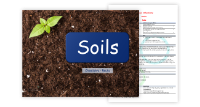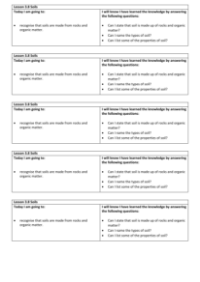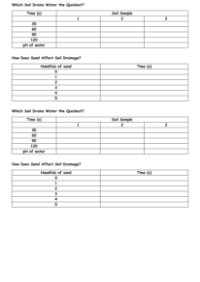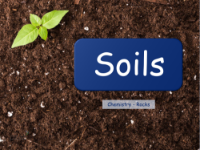Soils - Lesson Plan
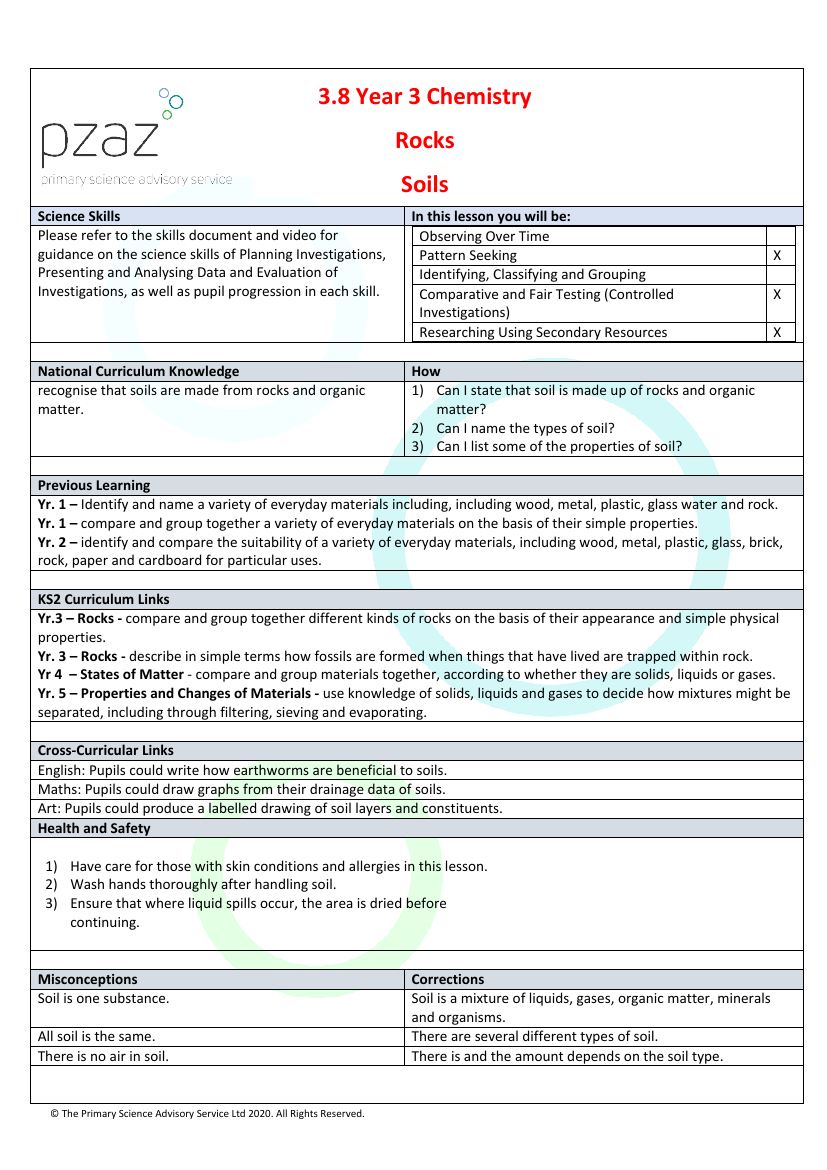
Science Resource Description
The lesson plan provided by The Primary Science Advisory Service Ltd focuses on enhancing students' understanding of soils within the context of the National Curriculum for Science. The plan is structured to develop various scientific skills, including planning investigations, presenting and analysing data, and evaluating investigations. Students will explore the composition of soil, learning that it consists of a combination of rocks and organic matter. They will build on knowledge from previous years, such as identifying different materials and their properties, and apply this to the study of soil. The plan includes activities to observe soil over time, seek patterns, and conduct comparative and fair testing. Students will also engage in research using secondary resources to further their learning. The lesson emphasises the misconception that soil is a singular substance, correcting it with the fact that soil is a complex mixture containing liquids, gases, organic matter, and organisms, and that it varies in type and content of air depending on its classification.
Practical activities are central to the lesson, with a soil separation experiment where students use colanders and sieves to observe the different layers of soil, such as humus, topsoil, and subsoil. They will also investigate the drainage properties of various soil types using measuring cylinders, filter paper, and pH indicator paper. Cross-curricular links are made to subjects like English, Maths, and Art, encouraging students to write about earthworms, graph drainage data, and draw soil layers. Health and safety considerations are highlighted, including care for those with allergies and skin conditions, and ensuring hands are washed after handling soil. The lesson concludes with a plenary session where students reflect on their learning by answering questions about soil constituents, types, and properties, and assess their progress using an assessment grid.

